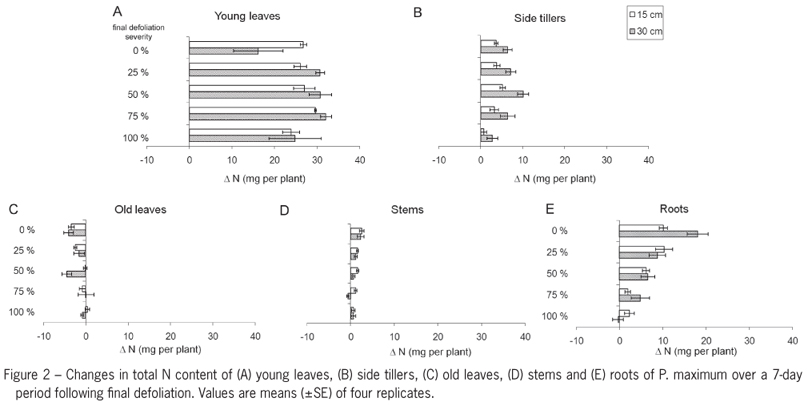Dry mass production and persistence of Panicum maximum pastures depends on nitrogen supply. Defoliation influences N uptake and allocation patterns yet its effects on plasticity of N dynamics in P. maximum have not been investigated. Stable isotopes of N (15N) were used in order to test the hypothesis that defoliation in terms of proportion of the leaf area removed effects N mobilisation, uptake and allocation patterns in P. maximum. The plants were initially cut weekly to a height of either 0.15 m or 0.30 m for seven weeks. Eight weeks after the first defoliation, all plants were defoliated for a final time to remove 0, 25, 50, 75 or 100 % of the area of each individual leaf blade of the main tiller. Root N uptake was reduced when all leaf area was removed, but more lenient defoliation improved N uptake due to a positive effect on specific N uptake. Young leaves, side tillers and roots were the main sinks for N from root uptake. Roots of P. maximum became a net source of N for mobilisation immediately after severe defoliation. Root uptake was the main source of N for new growth in P. maximum plants. Allocation pattern of mobilised N was different from that of N derived from root uptake. It was concluded that adaptation of P. maximum to defoliation is related to plasticity of N uptake, mobilisation and allocation, but changes in N dynamics did not offset negative impacts of complete defoliation of the plants.
clipping height; guineagrass; organic reserves; regrowth; tropical grass






